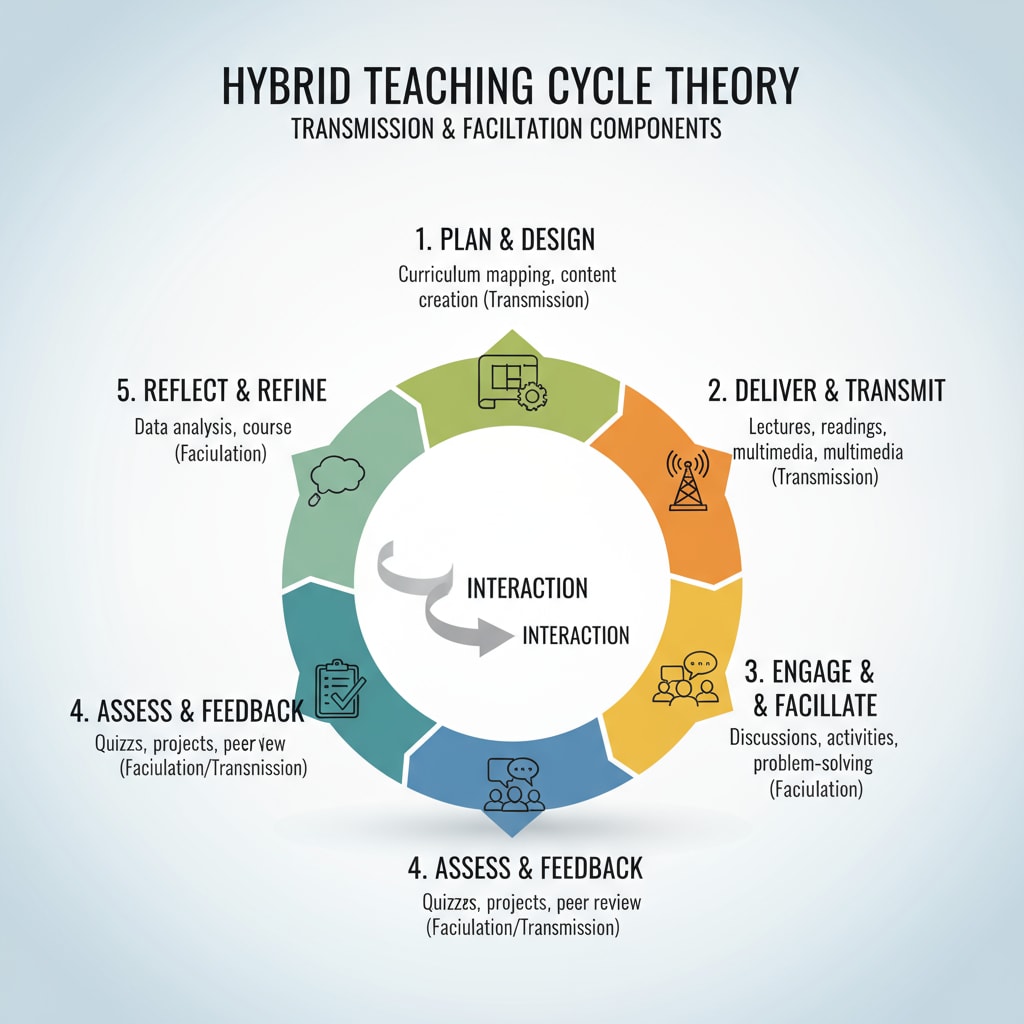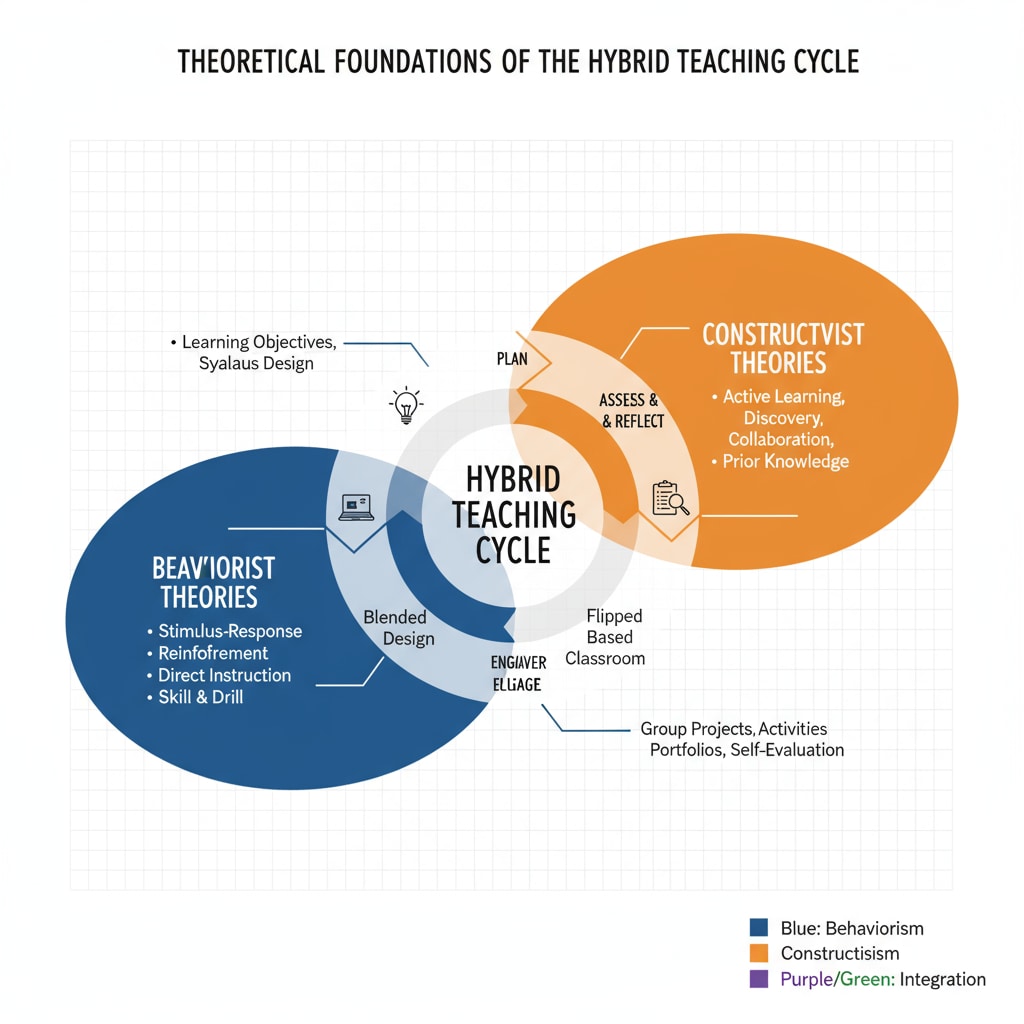The hybrid teaching cycle theory, a combination of transmission and facilitation within an educational model, has emerged as a significant approach in modern education. This theory aims to create a balanced and effective learning environment by integrating traditional and modern teaching methods. By understanding its definition, theoretical basis, and analyzing its advantages and disadvantages, educators can better utilize this approach in K12 education.
Defining the Hybrid Teaching Cycle Theory
The hybrid teaching cycle theory is a systematic approach that combines elements of traditional teacher-centered transmission teaching and student-centered facilitation teaching. It consists of five key steps that work in harmony to promote learning. For example, in a science class, the teacher may start with a traditional lecture (transmission) to introduce fundamental concepts, and then move on to group experiments where students explore and discover on their own (facilitation). According to Hybrid Teaching Model on TeachThought, this cycle allows for a more comprehensive learning experience.

Theoretical Foundations of the Hybrid Teaching Cycle
The theory draws on multiple educational theories. Behaviorist theory, for instance, supports the transmission part, as it emphasizes the role of the teacher in presenting information and reinforcing learning. On the other hand, constructivist theory underpins the facilitation aspect, stating that students construct knowledge through their own experiences. This combination, as described in Educational Psychology on EducationalPsychology.com, creates a well-rounded foundation for the hybrid teaching cycle theory.

Moreover, cognitive theories also play a part. They highlight the importance of understanding how students process information, which is crucial in both the transmission and facilitation phases. By considering these different theoretical perspectives, educators can design more effective teaching strategies within the hybrid teaching cycle framework.
Readability guidance: The above content clearly presents the definition and theoretical basis of the hybrid teaching cycle theory. Short paragraphs are used to improve readability, and external links are provided for further exploration. Transition words like ‘for instance’ and’moreover’ are used to enhance the flow of the text.
Advantages of the Hybrid Teaching Cycle Theory
- Enhanced student engagement: The combination of transmission and facilitation caters to different learning styles. For example, some students may benefit from the structured knowledge delivery in the transmission phase, while others thrive in the self-directed exploration of the facilitation phase.
- Balanced learning experience: It provides a balance between teacher guidance and student autonomy. Teachers can ensure that essential knowledge is transmitted, while also allowing students to develop critical thinking and problem-solving skills through facilitation.
- Flexibility in teaching: Educators have the flexibility to adjust the teaching approach based on the subject matter and the needs of the students. This adaptability makes the hybrid teaching cycle suitable for various educational settings.
Disadvantages of the Hybrid Teaching Cycle Theory
- Implementation challenges: Implementing the hybrid teaching cycle requires careful planning and preparation. Teachers may face difficulties in smoothly transitioning between the transmission and facilitation phases, especially if they are not well-trained.
- Resource requirements: It may demand additional resources, such as specialized teaching materials for the facilitation activities and technology for a more interactive learning environment.
- Assessment complexity: Assessing student learning in a hybrid teaching cycle can be more complex. Traditional assessment methods may not fully capture the learning that occurs during the facilitation phase, requiring the development of new assessment strategies.
In conclusion, the hybrid teaching cycle theory offers a valuable educational model that combines the best of traditional and modern teaching methods. Despite its challenges, it has the potential to revolutionize K12 education by providing a balanced and engaging learning experience. Educators should carefully consider its application to harness its benefits and overcome its limitations.
Readability guidance: The advantages and disadvantages are presented in a clear list format. Short paragraphs and simple language are used for easy comprehension. Transition words are used throughout to connect ideas.


